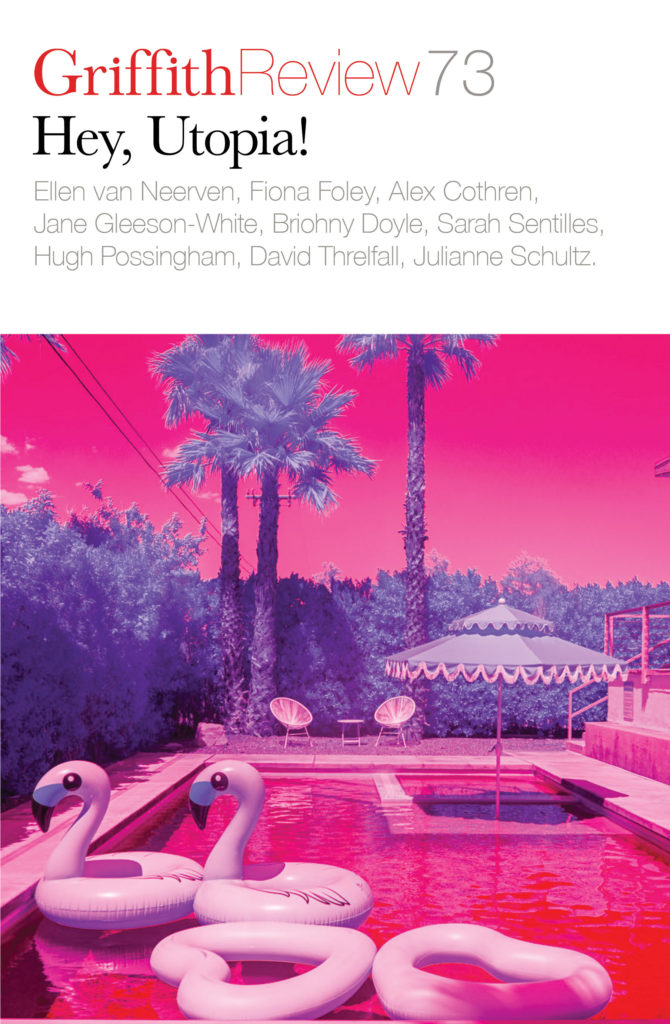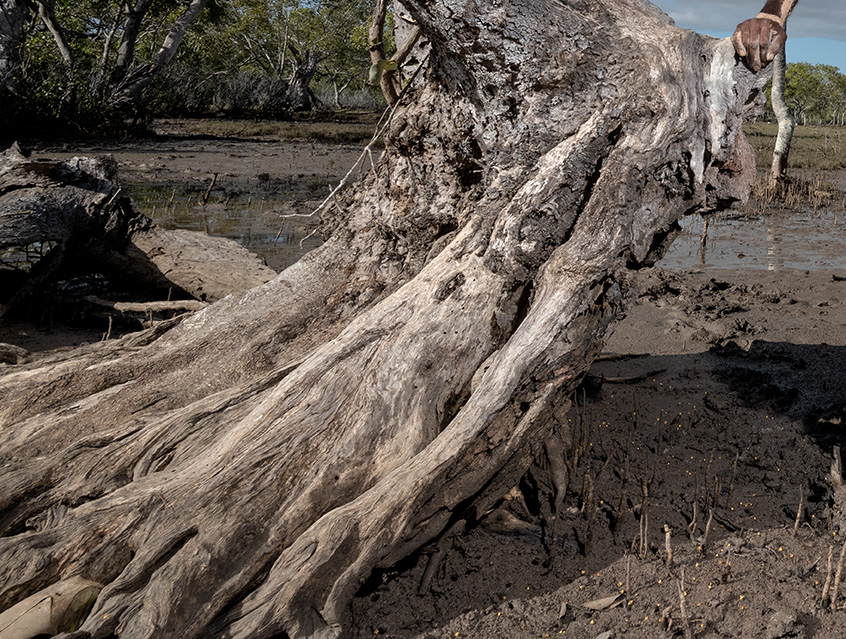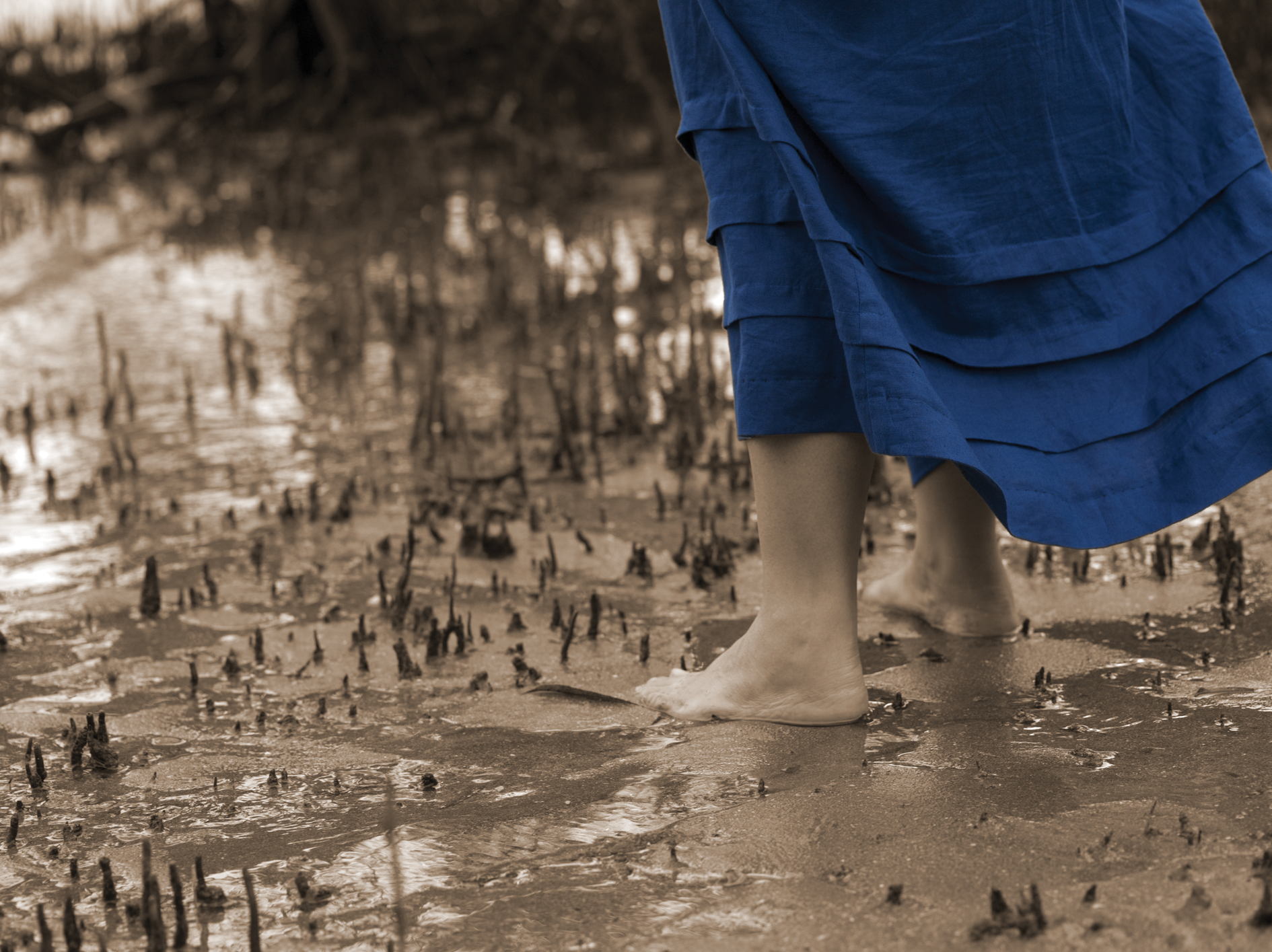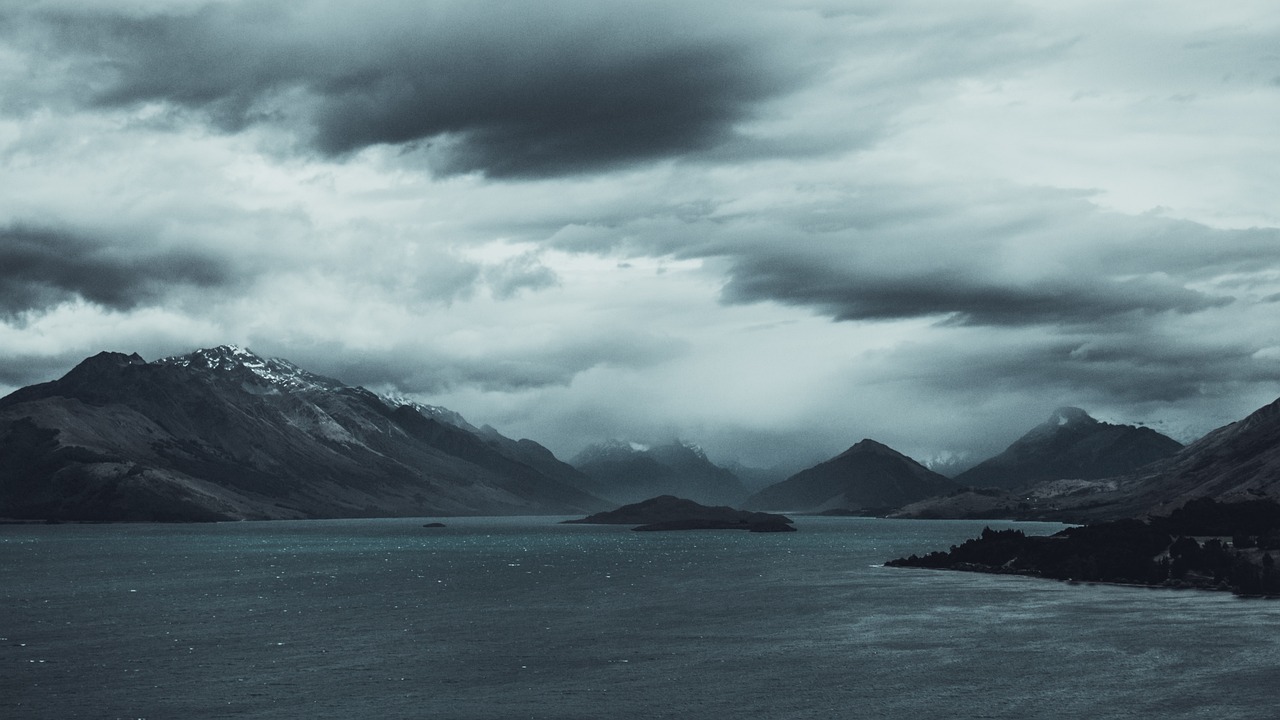Featured in

- Published 20210803
- ISBN: 978-1-922212-62-7
- Extent: 264pp
- Paperback (234 x 153mm), eBook
THE VERY IDEA of stepping back in time as a Badtjala woman is a utopian thought. Back in time the Badtjala people traversed to and from the mainland and the islands in the Great Sandy Strait with ease. What if I could be transplanted back to thirteenth-century Australia, before the madness of the colonial project took hold? What images would I discover on this old land? What scenes would be imprinted on my imagination? My utopian thought experiment – and new photographic project, The Magna Carta Tree (see a selection of images on pages 145–152) – had its genesis some 738 years ago, when a grey mangrove pod tenaciously spread it roots on the muddy intertidal zone adjacent to the coursing pulse of the Mary River that runs through the heart of Maryborough in Queensland. The sheltered estuarine life that supports crabs, turtles and mudskippers and the adjoining Susan River tributary form the backdrop to this living panorama. From a high vantage point, more than 700 years ago, I could have viewed the large body of water at River Heads, the gateway to K’gari (Fraser Island) and the Great Sandy Strait.
I fell in love with mangroves when I would go walking through them at Booral, Hervey Bay, searching for washed-up turtle or dugong bones on the high-water mark. Mangroves have been my companion; my art practice is littered with the flotsam and jetsam of mangrove discoveries. Walking in silence brings me joy through being present in moments of solitude. Time stands still for a while and I reflect upon my old people in this state of mind.
In Nomadic Theory, her 2011 publication on the flux state of sustainable modern subjectivity, the contemporary continental philosopher and feminist theorist Rosi Braidotti writes of ‘a double consciousness’. Braidotti engages the notion of the subject becoming ‘a nomadic, nonlinear philosophy of time as a zigzagging line’, someone who has ‘a very creative reading of memory and of its close relationship to the imagination’. As an artist, I was struck by this theory and wanted to place myself in the landscape as a subject with an imagination that might zigzag over country in a nonlinear reading of memory, encapsulating past, present and future in the same frame, jumping from one era to another. How far could I push my imagination, this location and time?
There is a tract of land that was once under the stewardship of the Badtjala people: now, under the name Tandora, it’s in the ownership of farmer and author Lindsay Titmarsh and his extended family – it has been since 1907. Here, interwoven paths are crisscrossed by time. My old people walked here, ate here, sang here and burnt country here. In the Badtjala language, pirri is the name we use for mangrove trees. Western science has identified forty-one mangrove species from nineteen plant families in Australia, and on Tandora ten different mangrove species grow.
Tandora, this cattle property on the northern outskirts of Maryborough, was the starting point for my new series of photographs. In 2019 I’d been excited to read about Mr Titmarsh’s own excitement when radiocarbon dating samples from the University of Waikato returned a date for a particular grey mangrove on his property: it was more than 700 years old. Mr Titmarsh named the tree ‘The Magna Carta Tree’ to coincide with the historical period of the thirteenth century, when ‘King John signed that historic document – the Magna Carta’. My imagination buzzed with all sorts of visual possibilities around this tree and this name: as an artist, I envisaged a new photographic series that could mix fact and magical realism.
I spent a little time with Lindsay Titmarsh scoping landscapes on his property for this project twelve months before I started photographing. I had an idea that my central character would stand between the two surviving trunks of this ancient tree of knowledge; I had an image of the musician Joe (Richard) Gala wearing two black cockatoo feathers in his headband – I kept referring to this character as ‘Two Feathers’. Two Feathers and The Magna Carta Tree would be my starting point. This ancient land doesn’t give up her secrets easily, but I reflected on the times when my forebears walked this way in a utopia I can only dream about, hey.
MANGROVES ARE IMPORTANT ecosystems to Aboriginal coastal nations. I grew up knowing that mud crabs came from the mangroves through the Gala brothers – Benny and JG – who would go out crabbing at Urangan and bring back a sugarbag-full to sell to people on their way home. The going price back in the day was fifty cents a crab. Mum would cook them in a pot of boiling water on the stove and then let them cool before she took out the meat. We would have this on freshly buttered brown bread with pepper. She also taught us how to collect and cook periwinkles from the mangroves. At other times we would go out and look at the fish traps at Booral and collect oysters off the rocks. And maybe this is the utopia I long for, a bygone time when life was much simpler. Recently I drove past all the old access points – from Pacific Drive to Pelican Avenue – that used to allow passage onto the mangroves at Booral. They’re now cut off by private property owners, the signage reinforcing their individual land tenure that butts up against estuarine mud and thickets of mangroves. How could the Fraser Coast Regional Council have allowed this to eventuate without a buffer zone for these important intertidal zones?
For Badtjala people this is an arrogant affront to the idea of who ‘owns’ what. Property as we know it today is a ‘racist formulation’, meaning that there are a number of forms in which property can become racialised. Pacific Drive and Pelican Avenue previously offered two public paths into the mangroves at Booral; now there are none. Only after land was purchased or changed hands did these common-usage throughfares become non-negotiable. In ‘Whiteness as Property’, a seminal 1993 essay, the race theorist Cheryl I Harris, UCLA Rosalinde and Arthur Gilbert Foundation Chair in Civil Rights and Civil Liberties, writes: ‘Possession – the act necessary to lay the basis for rights in property – was defined to include only the cultural practices of whites.’
The cultural practices of the Badtjala people, which enable them to be stewards on their own country, to fix and repair the fish traps at Booral and to hunt and gather, has been overridden by white privilege.
FOLLOWING THE ARC of my imagination out from the mangroves at Tandora, I selected a number of locations on Badtjala country from the mainland to K’gari. These included the Bogimbah Creek mission (established in 1897 and closed in 1904) and Wharf Street, Maryborough, from its time as a busy port city operating around clandestine opium dens at night. Nocturnal proclivities took on a seedy shade and involved both the inhabitants of gentrified and not-so-gentrified white society: men folk would come out to play with Aboriginal females, engaging in sexual exchanges and smoking opium. These interracial activities led to harsh penalties and the enactment and enforcement of the Aboriginals Protection and Restriction of the Sale of Opium Act 1897. Maryborough was the site of the removal of fifty-one Badtjala people who were transported across to White Cliffs on Fraser Island on 24 February 1897. This relocation was precipitated by the spread of venereal disease and public demands for the banishment of Badtjala men, women and children. Historian Raymond Evans writes, ‘many young white lads were contracting venereal disease from young gins’. The question is, who was infecting whom? The perceived eyesore of Badtjala people living in and around the town in a bedraggled state, eking out an existence, was in part solved by their physical relocation to the largest sand island in the world.
But more outcries came from Maryborough residents about these same Aboriginal people and complaints were made to Home Secretary Horace Tozer. Tozer acted in response to the ‘demands of the Maryborough people, and their apparent objection to the blacks occupying the recreation reserve at White Cliffs’. They were relocated for a second time; a new reserve was established eight miles further north at Bogimbah Creek.
The ideals of Archibald Meston, the first Protector of Aboriginals in the south to assimilate Aboriginal people, never came to fruition at the Bogimbah Creek mission. When the state government handed over control to the Anglican Church in 1900, the Christian utopia that Reverend Ernest Gribble was looking for never eventuated either. Yet despite decades of Badtjala people being moved from one place to another within Badtjala country and elsewhere, we have overcome many racial ideologies, paternalistic attitudes and legal challenges. Native Title Consent Determination for K’gari was handed down in 2014 and for the mainland in 2019 by the Federal Court of Australia.
THE CONTEMPORARY CITIZENS of Maryborough like to remain unaware of our shared history; they have also conveniently whitewashed past racialised deeds, choosing to focus instead on Mary Poppins’ fame. Tourism celebrates the author of Mary Poppins, PL Travers, born in the city as Helen Lyndon Goff in 1899 and a constant presence for anyone visiting Maryborough today. There is a dedicated statue in bronze, a festival, emblematic traffic lights and a building – The Story Bank – that profiles her most famous character. The cultural precincts of Maryborough, Hervey Bay and K’gari are largely devoid of a strong Badtjala cultural presence in the visual landscape. This absence informs that double consciousness I must repeatedly look past, an out of sight, out of mind ethos in decision-makers in regional Queensland that still looms large.
The irony is that the Year of Indigenous Tourism has now been extended from 2020 into 2021. But where is the Badtjala public art precinct, the memorials on K’gari, the building that houses Badtjala culture, the Badtjala festival, the history trails, the bronze plaques and dedicated signage that we don’t have to share with the local flora and fauna? The Badtjala people remain as elusive as ever for visitors to the Fraser Coast.
But I walk my country with a knowledge that Badtjala people still walk this earth. My visual language reinstates our sovereignty back to this gnarled and beautiful place again and again. What’s possible is that I am able to inhabit that double consciousness – two worlds constructed and running parallel yet divided by racial obfuscation. My creativity is highlighted through moments in time, from the mangroves of the 1300s and the opium dens of the late 1800s to the eventual subjugation of a race of people at Bogimbah Creek mission. Yet Badtjala people have used – and continue to use – those systems of control to make counter manoeuvres with dignity, intelligence and humour and to find their eventual freedom.
The Magna Carta Tree

Fiona Foley, The Magna Carta Tree #1, 2021, Hahnemühle cotton rag paper. Photo: Mick Richards.

Fiona Foley, The Magna Carta Tree #7, 2021, Hahnemühle cotton rag paper. Photo: Mick Richards.

Fiona Foley, The Magna Carta Tree #4, 2021, Hahnemühle cotton rag paper. Photo: Mick Richards.

Fiona Foley, The Magna Carta Tree #14, 2021, Hahnemühle cotton rag paper. Photo: Mick Richards.

Fiona Foley, The Magna Carta Tree #9, 2021, Hahnemühle cotton rag paper. Photo: Mick Richards.

Fiona Foley, The Magna Carta Tree #10, 2021, Hahnemühle cotton rag paper. Photo: Mick Richards.

Fiona Foley, The Magna Carta Tree #16, 2021, Hahnemühle cotton rag paper. Photo: Mick Richards.

Fiona Foley, The Magna Carta Tree #1 [detail], 2021, Hahnemühle cotton rag paper. Photo: Mick Richards.
This project was carried out between 15 and 27 February 2021. I would like to thank Lindsay Titmarsh for allowing me onto his property with a team of creatives to make this new series of photographs and to use the title of the tree, coined by him – The Magna Carta Tree – as the title of this new body of work. This project was funded by the Cherish Fund, Australia Council for the Arts.
References
Braidotti, R, 2011, Nomadic Theory: The Portable Rosi Braidotti, New York: Columbia University Press, p. 32.
Foley, S, 2019, Badtjala – English/English – Badtjala Word List, first published by Wondunna Aboriginal Corporation in 1996, republished by Wondunna Aboriginal Corporation in 2018 and Pirri Productions in 2019.
Australian Government, 2020, ‘Mangrove Forest’, https://www.agriculture.gov.au/abares/forestsaustralia/profiles/mangrove-2019
Titmarsh, L, 2014, Mary and Susan: Sister rivers of the Fraser Coast, Toowoomba: Jinglestix.
Harris, CI, 1993, ‘Whiteness as Property’, UCLA School of Law, Public Law and Legal Theory Research Paper Series, Research Paper No. 06-35. Reprinted from Harvard Law Review, vol. 106, no. 8.
Evans, R, 1999, Fighting Words: Writing about race, Brisbane: University of Queensland Press, p 136.
‘White Cliffs. The Recent Trouble. Mr Tozer’s Decision’, Queensland Times, Ipswich Herald and General Advisor, Saturday 22 May 1897, p. 5.
Share article
More from author

All men choose the path they walk
Picture GalleryTHE WAILING THERE IS A deep wailing across this country. I heard it once when I was a child in Mount Isa. The wailing is...
More from this edition

Erasure
EssayIt was thanks to a series of deliberate decisions made during the nineteenth century that women’s critical labours were designated ‘unproductive’ and simply wiped from view. Key to these erasures was Alfred Marshall, the revered father of neoclassical economics, who advocated strict limits on women’s choices lest they behave selfishly.

Hummingbirds in the forest of needle and blood
PoetrySay there is a boy in a village. Say the boy is not always a boy, but today he is. Say he is wandering...

New world dreams
EssayEREWHON. SOUNDS WELSH – the soft ‘h’. That’s what I thought when I first saw the word on the higgledy-piggledy front fence of a...